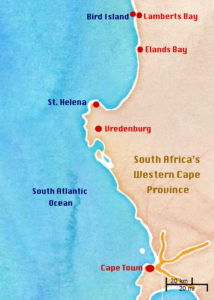
Written by Janet-Lynn Vorster
Photos by GlobeRovers
Towns in the Cederberg region include Citrusdal, Clanwilliam, Elandsbaai, Graafwater, Lamberts Bay, Leipoldtville, and Wupperthal.
The region has a rich natural heritage, a large citrus industry and imposing mountains. This is the only place in the world where the renowned, healthy red-hued tea bush, Rooibos, occurs naturally.
South Africa’s Cederberg on the West Coast is known for its fishing villages, fresh seafood, and excellent surfing. We visit the villages of Elands Bay and Lamberts Bay and were amazed by the tranquillity and unspoilt nature.
We visit the Cederberg coastal towns of Elands Bay and Lamberts Bay. Most people here speak Afrikaans but understand English.
From August to October each year, Mother Nature paints her canvas with a patchwork quilt of brilliant colours.
Elands Bay – Surfer’s Paradise of the West Coast
Elands Bay, roughly 210 km from Cape Town, is a seaside village with no frills attached. None. Whatsoever.
The main road ends at the Eland’s Bay Municipal Caravan Park. Turn right to Elands Bay Hotel, the only hotel in the village. It overlooks the sea, so be sure to ask for a sea-facing room if you book here.
Within 100 metres of the hotel you can surf, eat out, get into a bar fight, withdraw money from the ATM, pop in at the liquor store, buy supplies, fill up with gas and say hi at the police station. This little hub is where you can blend with the locals, buy them a beer and find out all you need to know about the area.
The Wit Mossel Pot, with its surf shack décor, is where you can rent a wetsuit and surfboard. This village is Stefan’s happy place, and he was my inspiration for the “Chasing Waves” column. Fondly known as E-Bay, it sports a long, peeling, world-class left-hand point break: a world-famous wave.
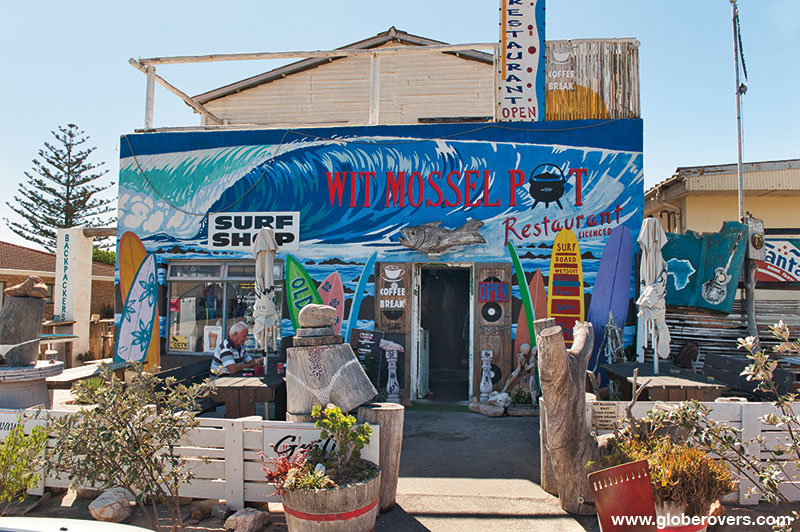
Elands Bay is known for its lobster and potato farming, and a paradise for surfers and birdwatchers.
Verlorenvlei, a long estuary stretching from Elands Bay to Redelinghuys, is one of the largest lakes, one of the few coastal freshwater lakes and one of the largest natural wetlands on the Cape’s west coast. Over 180 bird species can be found here, so pack your binoculars. It boasts over a thousand wading birds and over 75 species of water birds.
The scenic southwest tip of Elands Bay, a well-known landmark of the Cederberg with its rocky cliffs, is known as Baboon Point. It juts out into the Atlantic Ocean. Hidden in the mountain is a cave with rock art, proclaimed a provincial heritage site in 2009.
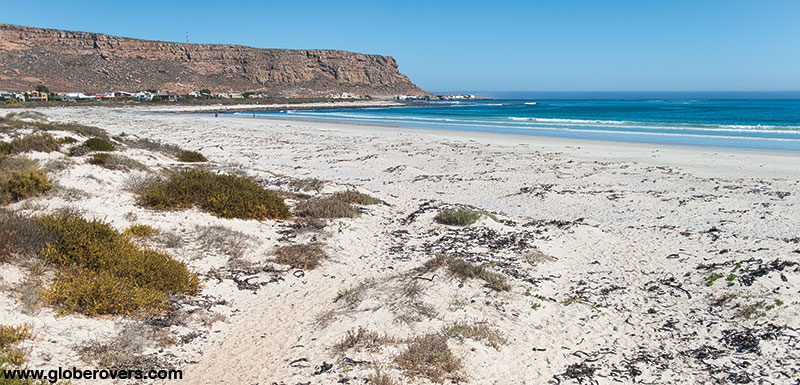
The craggy hills in the area offer opportunities for hiking and rock-climbing.
A large seal colony, Southern Right Whales and Heaviside’s dolphins can be spotted along the coastline.
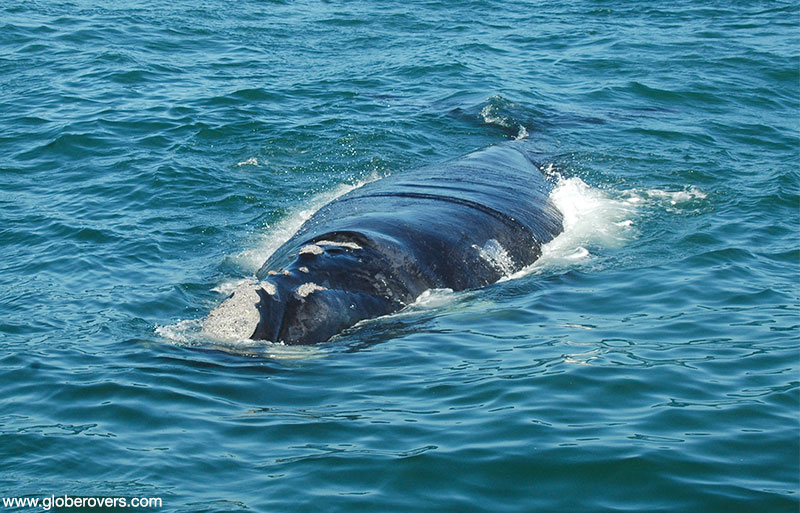
The Sishen-Saldanha railway line connects iron ore mines near Sishen in the Northern Cape with the port at Saldanha Bay in the Western Cape. This 861-kilometre-long heavy-haul railway line runs through a tunnel under Baboon Point in Elands Bay.
In 1989, a world record was set for the longest and heaviest train in the world, which ran on this connecting line. At a length of 7.281 km, this monster thundered through Elands Bay with 660 fully-laden ore trucks, nine electric locomotives, seven Diesel engines and three other cars.
We stopped to photograph and video it. With a braking distance of 3km, we did not venture too close to the tracks!
A local resident sums it up nicely. She says it is not about what you can see in Elands Bay, but what you can feel. She reckons heaven is waking the morning after a sweltering hot day to find “clouds lying in the street”, as her son describes the fog, and being alone on the beach with the sea birds, with sand dunes as far as the eye can see.
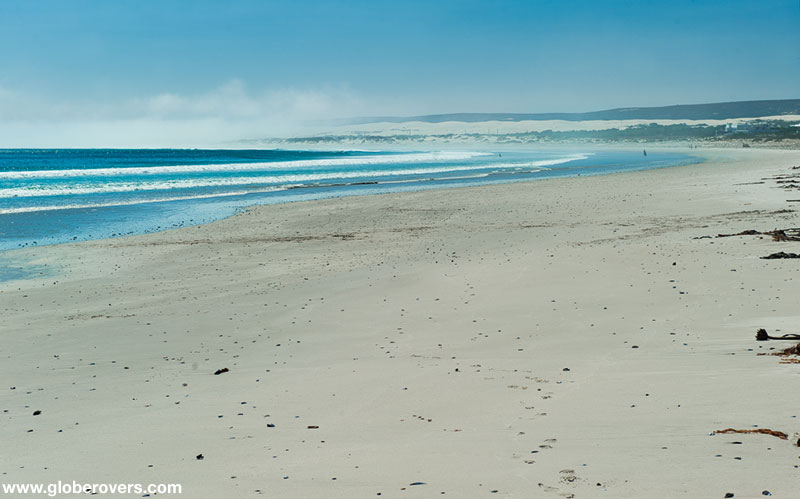
If off-the-beaten-track places and absolutely spectacular sunsets float your boat, then definitely add Elands Bay to your itinerary.
Lamberts Bay – Proclaimed “the Diamond of the West Coast”
Proclaimed “the Diamond of the West Coast”, Lamberts Bay is 23 km north of Elands Bay. The title alludes to the offshore diamond mining, as Lamberts Bay represents the southernmost tip of the offshore diamond mining concessions in South Africa.
Lambert’s Bay, originally named Otterdam, was later renamed after Admiral Lambert of the British Navy. It has about four times the population of Elands Bay.
When I asked maritime archaeologist, Jaco, what shipwreck came to mind on the west coast, it was without hesitation the HMS Sybille. Lambert’s Bay was used as a lay-up for British warships during the war, and in 1901 HMS Sybille was wrecked opposite Steenbokfontein. She hit a reef in the early hours of the morning, and the ensuing investigation revealed serious lapses in navigation and the handling of the vessel. The currents and rough seas pushed the vessel off course.
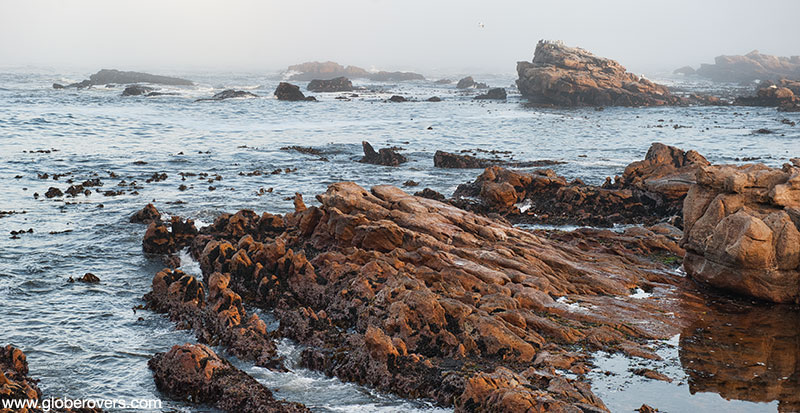
The miracle of the story is that around 250 crew members were rescued without mishap, in difficult weather and sea conditions. The only casualty was an ordinary seaman who was crushed against one of the vessel’s 4.7-inch guns.
The propeller of the HMS Sybille can be seen at the Sandveld Museum in Church Street. The museum houses exhibits such as “Old” Lambert’s Bay, and the fishing and farming industry.

The first crayfish factory, erected in 1918, is still there today but is no longer in use. Lamberts Bay Foods (LBF) is a social responsibility project to offset job losses in the region due to the decline in fishing employment.
A gravel service road for the Sishen Saldanha railway runs between the wild and rugged beauty of the Cape west coast and the railway tracks. Five kilometres south of Lambert’s Bay on this gravel road you will locate Muisbosskerm on the beach. During a leisurely buffet meal, you can experience some of the west coast’s seafood dishes and savour traditional “waterblommetjie bredie” and “hotnotskool bredie”.
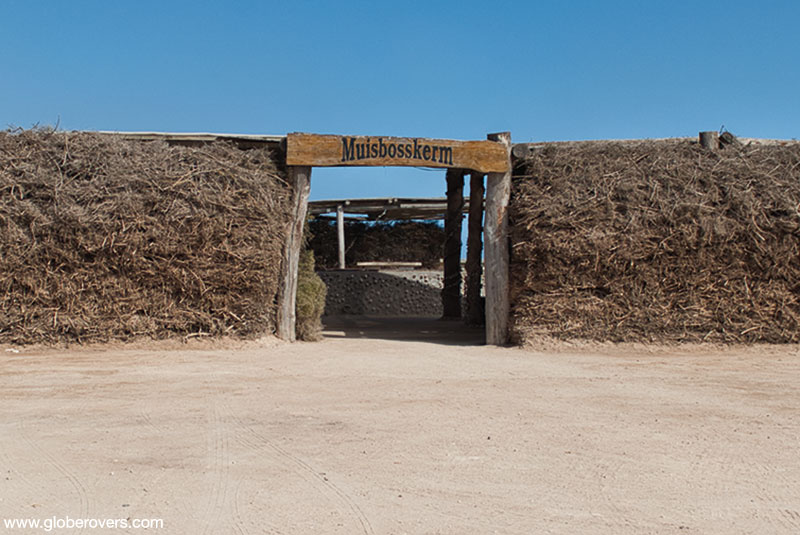
Plaaskombuis Restaurant, 9 km south of Lamberts Bay, serves Namaqualand food like lamb braised in the pot, golden aniseed sweet potatoes, and mussel soup made on a coal stove.
Phone ahead and make reservations, as they are not open every day.
The heart of the town is the picturesque harbour filled with colourful fishing boats, also used as a base by the diamond mining boats. Offshore diamonds are mined by converted trawlers and other small craft, and deep-sea divers locate diamond-bearing gravel on the seabed, directing suction hoses into crevices and gravelly areas. This gravel is sorted and the diamonds are removed. Diamond divers do one of the world’s toughest jobs. Sea conditions allow them to work about six days a month on average, submerged for long hours in the bitterly cold Atlantic Ocean.

Diamond diving offers employment to strong men with commercial diving certificates, as families have taken a hard knock through depleting fish populations and tightened fishing regulations.
Relax on the unspoilt sandy beaches. Or, if you are very fit and well kitted out, walk the Crayfish Trail where you won’t see another soul for days.
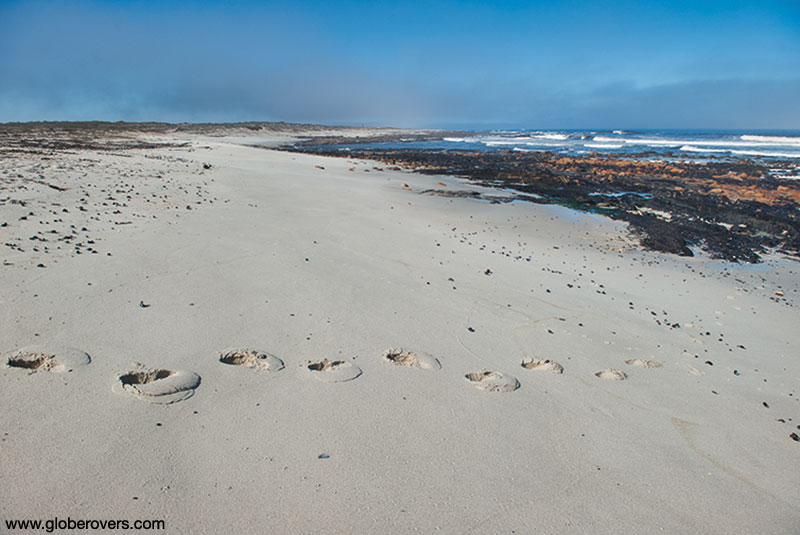
For wine and craft beer tasting, Namaqua Wine and Beer Tour will treat you to a fun day tour.
Whatever you do, don’t miss Bird Island.

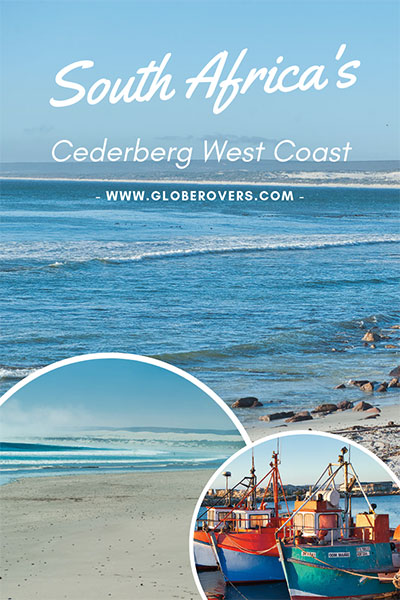

Janet-Lynn is a numerologist by profession, and journalist, editor and photographer by hobby. She is the proud mother of three grown children and granny to three grandchildren.

